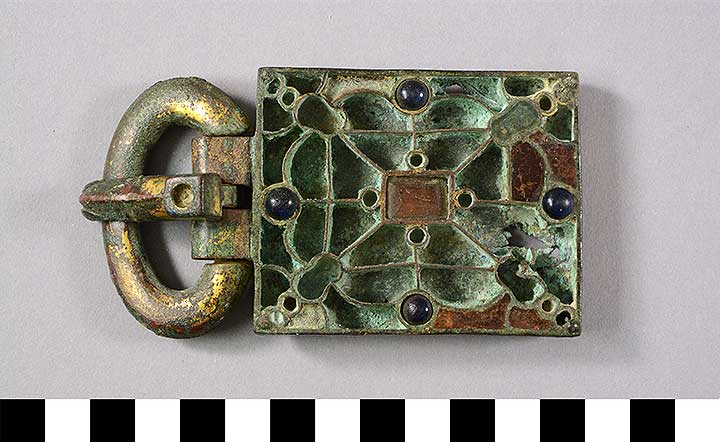Visigoth Buckle
1924.02.0068
Detailed Images
Basic Information
| Artifact Identification | Visigoth Buckle (1924.02.0068) |
|---|---|
| Classification/ Nomenclature |
|
| Artist/Maker | Unknown |
| Geographic Location | |
| Period | Visigoth |
| Date | 400 – 800 |
| Culture | Visigoth, Spanish |
| Location | Not on Exhibit |
Physical Analysis
| Dimension 1 (Length) | 11.5 cm |
|---|---|
| Dimension 2 (Width) | 6 cm |
| Dimension 3 (Depth) | 2 cm |
| Weight | 161 g |
| Measuring Remarks | N/A |
| Materials | Metal--Bronze, Stone |
| Manufacturing Processes | Forging, Inlaying |
Research Remarks
| Description | N/A |
|---|---|
| Published Description | Under Review |
| Bibliography | Heritage newsletter, Fall 1990, p. 6. Early draft on file. |
Artifact History
| Credit Line/Dedication | Baudon Collection |
|---|---|
| Reproduction | no |
Contact
All information about our collection is constantly reviewed and updated. Please contact Dery Martínez-Bonilla, Registrar, if there is any information you are looking for that isn't currently online.
